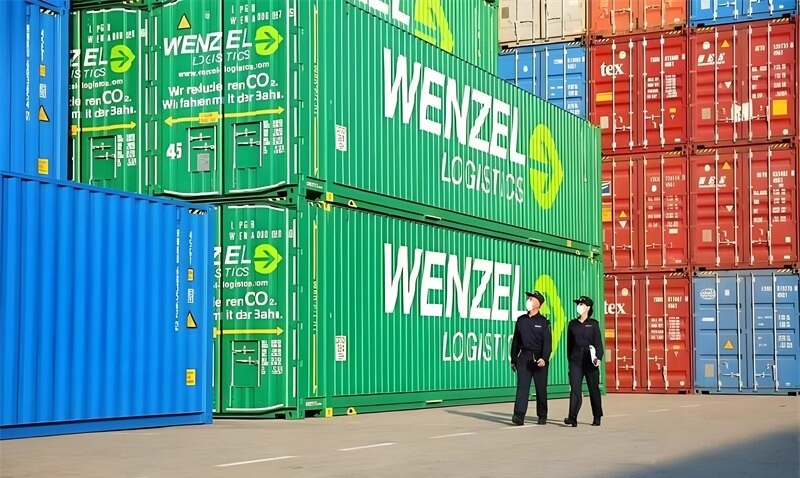High Quality OEM/ODM LED Strip Manufacturer
High Quality OEM/ODM LED Strip Manufacturer
November 5, 2024 103
Importing LED strips from China can be a cost-effective solution for businesses and individuals looking to reduce expenses and access a wide variety of products. As China is a major global manufacturer of electronics and lighting equipment, importing directly from Chinese suppliers is a popular choice. However, understanding the full process, relevant regulations, and potential challenges is essential for a smooth import experience. This guide provides detailed steps to help you import LED strips from China successfully.

Cost Savings: Chinese manufacturers offer highly competitive pricing, which can significantly reduce purchasing costs.
Wide Product Selection: From simple single-color strips to advanced RGB-controlled options, Chinese suppliers offer a variety of LED strip options to meet diverse market demands.
Advanced Manufacturing: China has made significant investments in LED technology, resulting in high-quality products with long lifespans, high brightness, and compliance with international standards.
The first step to a successful import process is finding a trustworthy supplier. Here are a few effective ways to locate suitable suppliers:
Alibaba, Global Sources, and Made-in-China are ideal for finding suppliers.
Tip: Look for suppliers with positive customer reviews and verified certifications (like ISO, CE, RoHS) and compare prices to ensure the best option.
China hosts several large-scale lighting exhibitions each year, such as the Canton Fair and the Hong Kong International Lighting Fair.
Tip: Face-to-face meetings provide a great way to view product samples and verify the supplier's credentials, helping you select a reputable supplier.
Each country has unique safety and quality requirements for electronics. Ensuring LED strips meet these standards not only avoids legal issues but also ensures consumer safety.
Reputable suppliers typically have certifications to meet import requirements. Common international certifications include CE, RoHS, and FCC.
Before placing a bulk order, request samples to test for product quality, brightness, and ease of installation.

Customs and tax policies are essential considerations when importing LED strips.
The HS code (Harmonized System code) for LED strips is typically 8539.50 or 9405.40, but this may vary by country. Confirm the correct code and applicable tariffs with the destination country’s customs authority.
Different countries have varying import duties and value-added tax (VAT) rates. Usually, import duties depend on the product category and quantity, while VAT is charged upon the arrival of goods.
Customs documentation usually includes invoices, packing lists, bills of lading, and certificates that confirm compliance with import regulations. Having complete documents can expedite customs clearance.
There are three main shipping options for importing LED strips from China: sea freight, air freight, and express delivery.
Ideal for large orders or when time is flexible.
Pros: Cost-effective for bulk shipments.
Cons: Longer transit time (usually 30-45 days).
Best for medium-sized orders with a moderate time requirement.
Pros: Faster transit time (typically 7-10 days).
Cons: Higher cost compared to sea freight.
Suitable for small orders or urgent shipments, with providers like DHL, UPS, or FedEx.
Pros: Fastest option, suitable for samples and urgent orders.
Cons: High cost, more expensive per unit than sea and air freight.
When communicating with Chinese suppliers, language and cultural differences can pose challenges. These tips can help facilitate smoother interactions:
Keep English short and simple to avoid misunderstandings when communicating product specifications and requirements.
For long-term partnerships or large purchases, hiring a translator or procurement agent can help with effective communication, ensuring accurate understanding of product details and requirements.
The choice of payment method affects the security of your transaction. Common payment methods include:
Suitable for large orders, a letter of credit provides added security through bank mediation.
Pros: Secure, ideal for new supplier relationships.
Cons: Higher transaction fees, complex processes.
Popular for trusted suppliers, usually involves 30% upfront payment and 70% before shipment.
Pros: Convenient, suitable for most medium-sized transactions.
Cons: Some risk, particularly with new suppliers.
Good for small orders and sample purchases, with built-in buyer protection.
Pros: Fast and flexible, easier refund process.
Cons: Higher fees, may not be accepted by all suppliers.
International shipping involves risks, such as weather delays or customs issues. Insuring your goods can provide compensation in case of damage or loss.
Choose appropriate insurance options based on shipping method and cargo value.
Some suppliers may offer shipping insurance; inquire in advance and confirm the specifics to clarify responsibilities.
Importing LED strips from China can be challenging but rewarding. By researching the market, choosing reliable suppliers, adhering to local regulations, and selecting the right shipping and payment methods, you can ensure high-quality products at competitive prices that meet import standards. We hope this detailed guide will help you successfully import LED strips from China and enjoy the many benefits it can bring to your business or personal projects.
If you need assistance from professionals, feel free to contact us. We are here to provide you with expert help and support for all your needs. Don't hesitate to reach out to our team for personalized assistance and solutions. We look forward to serving you.
Our sales will reply to you within 2 hours.
